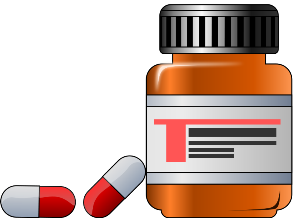An Unwilling Pathogen
Have you ever gotten sick after eating? Many people experience
vomiting, diarrhea, or nausea after eating a meal that may have
been contaminated by a pathogen. There are several bacteria
that can cause these symptoms, otherwise know as
gastroenteritis, an d among them is Plesiomonas shigelloides.
This toxic bacterium is commonly associated with seafood,
especially oysters, due to the fact that its
preferred
habitat is a
marine environment. But don’t fret; heat kills this bacterium.
Therefore, by simply cooking your food properly, you can avoid
ingesting this toxin all together. Keep in mind that fish are
not the only organism that interact
with this bacterium, and other animals eaten by humans can also
be infected. Luckily for humans, this bacterium cannot
successfully reproduce or get
nutrients from within our bodies
because it has not adapted to
survive there.
d among them is Plesiomonas shigelloides.
This toxic bacterium is commonly associated with seafood,
especially oysters, due to the fact that its
preferred
habitat is a
marine environment. But don’t fret; heat kills this bacterium.
Therefore, by simply cooking your food properly, you can avoid
ingesting this toxin all together. Keep in mind that fish are
not the only organism that interact
with this bacterium, and other animals eaten by humans can also
be infected. Luckily for humans, this bacterium cannot
successfully reproduce or get
nutrients from within our bodies
because it has not adapted to
survive there.
Note: Plesiomonas shigelloides and Shigella sp. are very different organisms, though their names are similar.
SYMPTOMS
After ingesting Plesiomonas shigelloides, symptoms include vomiting, nausea, diarrhea, fever, chills, and abdominal pain. These symptoms show up about 24 hours after ingesting this bacterium, and typically last between one to seven days.
TREATMENT

Individuals who do ingest this toxin will experience the symptoms mentioned above, which are uncomfortable but not deadly. The symptoms experienced by infected individuals is actually the human immune system trying to flush this bacterium out of its system . Most cases will cure themselves but if the symptoms aren’t subsiding after a week, seek antibiotics from your doctor.
PREVENTION
Make sure to cook any type of meat all the way through to kill off this toxin. This bacterium does live in water, so purify or filter any water from outdoors before drinking it.
There has been some debate as to the classification of this organism. The families of Vibrionaceae and Enterobacteriaceae are closely related, and it’s not clear which family Plesiomonas shigelloides belongs to. The genus Plesiomonas has flip-flopped between these families because of its relations the genus Aeromonas (in the Vibrionaceae family) and to Proteus (in the Enterobacteriaceae family). It is apparent that the genus Plesiomonas shares a common ancestor with the genus Proteus. For the purposes of this website, my research supports Plesiomonas shigelloides as part of the Vibrionaceae family. Find out more in the classification page.
To learn about other organisms head over to the Multiple Organisms webpage!
There's a lot of great facts to learn about this organism which can be located right here on my page, but if you have any lingering questions please feel free to contact me, Brittany Mackesey, at mackesey.brit@uwlax.edu. This page was created for Organismal Biology- 203 at UW-La Crosse.
This site was last updated in April of 2013.
